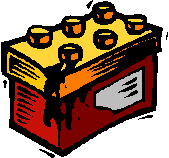You have probably heard this term before, and like most people, you might have been concerned that a harmful substance, such as an acid, might be falling on your head, carefully concealed in rain drops. You might also worry about the effects of such rain on your animals and your plants. You are right to worry.
Let us first explain what acid rain is.

What Is Acid Rain?
You cannot tell the difference between acid rain and normal rain with your five senses. You need a chemical means to measure how acid the rain drops are. The unit of measure for acidity is called pH. This measurement scale is based on logarithms, because the range of possible concentrations of acid is enormous, ranging from none to a whole lot of acid. The scale also runs in the other direction, to include measures for chemicals that have negative acidity (more properly called basic compounds). The pH scale ranges from 0 to 14, with the value of 7 being neutral (neither acid or base). Numbers from 0 to 7 are acid values and from 7 to 14 are basic values. You want your rain water to be near neutral (near a pH of 7). Actually, normal rain tends to have a pH value of about 5.5. Where do you suppose that acid came from?
What Causes Acid Rain?

Environmental scientists have found that the main causes of acid rain come from two chemical compounds: sulfur dioxide (SO2) and nitrogen oxides (NOx). These compounds get into the air and dissolve into the water in the air, which carry the compounds back to earth when it rains. But how do these compounds get into the air in the first place?
Burning fossil fuel supplies most of the SO2 and NOx. To summarize;

- Power plants, automobiles, and other sources burn fossil fuels
- SO2 and NOx are released into the air
- These compounds dissolve in and react with water in the air, making the water acid
- Rain, sleet, and snow carry the acid back to earth
Does Acid Rain Affect Humans?
Will being exposed to acid rain harm you? Probably not, unless you stand out in the rain a lot. But, the paint on your car can be damaged by acid rain. Your plants may be damaged.
The problem is not the rain that is the problem. It is the sulfur and nitrogen compounds that float suspended in the air you breathe. Acid rain may even harm you if you have pre-existing heart or lung problems. It could, for example, aggravate asthma. Furthermore, nitrous oxides react to form ozone, and ozone can irritate the lungs.
The Environment and Acid Rain
One sometimes noticeable effect of the sulfur and nitrogen compounds in the air is that they cut down on visibility. You can’t see as far as you would on a clear day. Acid rain eats away at the surface of buildings, especially those made of limestone or marble. Acid rain also affects the acidity of ponds, lakes, and rivers, causing their pH to drop. Some fish, such as bass and trout, are sensitive to changes in pH.
Plant life is also damaged by acid rain. Crops, forests, and other plants grow more slowly.
So How Do We Reduce Acid Rain?
We could stop burning so much fossil fuel. We can use more gas-efficient vehicles. We can use less electricity (most of which is produced by fossil-fuel burning power plants). We can promote the use of alternate energy forms where that is practical. In water environments, such as ponds, we can add basic compounds, such as lime, which neutralizes acid.
China has a very serious acid rain problem, because they burn so much coal. Coal contributes to over 90% of the air pollution in China. The Chinese government is now requiring companies to install equipment to remove sulfur from their smokestacks or use other fuels. Household consumers are being urged to switch to cleaner energy sources, such as natural gas or electricity.
How Acid is Your Rain?
You can measure the pH of rain water by using chemically treated “dip sticks,” such as those used to measure pH in spas and swimming pools.
Click here for more information about acid rain
Back to Hazards index
